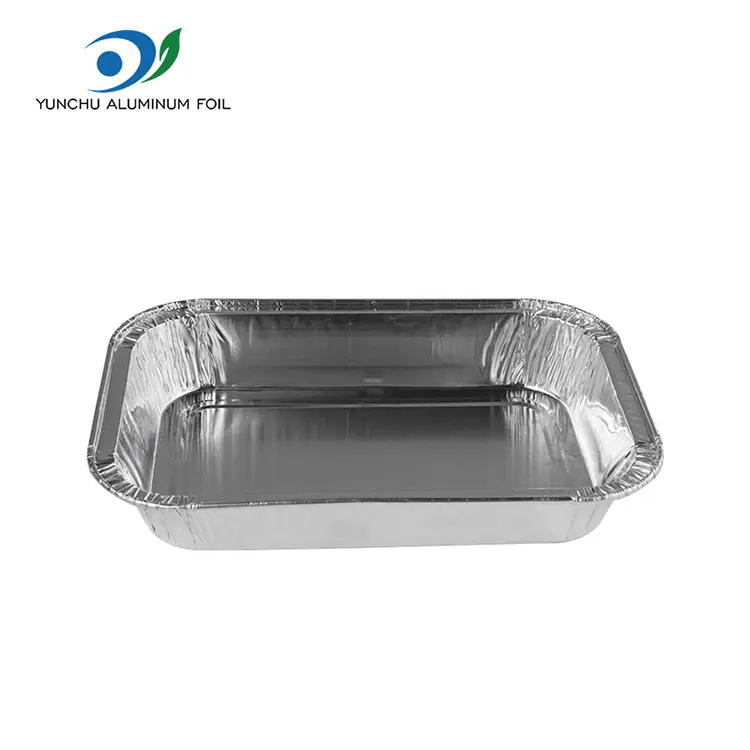What Makes Airline Meal Aluminum Foil Containers Essential for In-Flight Catering?
2025-09-01
Air travel has evolved rapidly in recent years, and with it, the demand for high-quality in-flight catering solutions has surged. Among the many components that contribute to a passenger’s dining experience, Airline Meal Aluminum Foil Containers play an essential role. These containers are not just packaging; they are engineered solutions designed to preserve freshness, maintain temperature, and ensure safety at cruising altitudes. As airlines compete to offer better passenger experiences, choosing the right meal packaging has become a critical decision for catering companies and airline operators.
Why Airlines Prefer Aluminum Foil Containers
Airline meals are subject to strict food safety regulations, and packaging plays a key role in meeting these standards. Aluminum foil containers are highly favored in aviation catering for several reasons:
Excellent Thermal Properties
Airlines operate under challenging conditions where reheating pre-packed meals must be efficient and safe. Aluminum foil containers are designed to withstand extreme temperature ranges, from deep freezing to oven baking, without compromising structural integrity. This ensures that food remains fresh and appetizing, whether it is stored, heated, or served mid-flight.
-
Temperature range: -40°C to +250°C
-
Thermal conductivity: Ensures even heating of meals
-
Compatibility: Safe for use in convection and microwave ovens (when lid-free)
Food Safety and Hygiene
Maintaining hygiene in aviation catering is non-negotiable. Aluminum foil naturally resists moisture, oxygen, and bacterial contamination, making it ideal for protecting meals during storage and transport. Its non-toxic properties and compliance with international food safety standards ensure that airlines can serve passengers safely.
Lightweight and Eco-Friendly
In aviation, weight reduction directly impacts fuel efficiency. Aluminum containers are both lightweight and sturdy, making them an environmentally responsible choice. Moreover, aluminum is 100% recyclable without losing quality, helping airlines reduce their environmental footprint while maintaining operational efficiency.
Enhanced Passenger Experience
Passengers expect hot meals to remain warm and cold dishes to stay fresh. Aluminum foil containers meet this demand by maintaining optimal temperatures and preventing food cross-contamination. Their sleek appearance and ability to hold sauces, liquids, and multi-component dishes enhance the overall presentation and dining satisfaction.
Technical Specifications of Airline Meal Aluminum Foil Containers
When choosing airline meal packaging, understanding technical details is essential. Below is a comprehensive specification table that highlights the key parameters of standard containers:
| Specification | Details |
|---|---|
| Material | Food-grade aluminum foil (8011 / 3003) |
| Thickness | 0.04 mm – 0.08 mm |
| Capacity | 150 ml – 1000 ml |
| Temperature Resistance | -40°C to +250°C |
| Surface Finish | Plain / Embossed / Color-laminated |
| Lid Options | Foil lids, PET-coated lids, paper lids |
| Recyclability | 100% recyclable |
| Certifications | FDA, ISO22000, SGS, LFGB compliant |
Applications and Customization Options
Wide-Ranging Airline Applications
Airline meal aluminum foil containers are primarily used for:
-
Hot meals: Pasta, rice dishes, meat entrées, and curries
-
Cold servings: Salads, fruits, and desserts
-
Snack packaging: Compact trays for sandwiches or pastries
-
Special meals: Vegetarian, vegan, and allergy-friendly servings
Custom Branding for Airlines
To enhance brand recognition, many airlines opt for custom-printed lids or embossed logos on their containers. With various coating options and surface finishes, these containers can be tailored to reflect the airline’s identity while maintaining practicality.
-
Color customization: Gold, silver, blue, and multi-color options
-
Logo embossing: Subtle branding without compromising recyclability
-
Printed foil lids: Perfect for promoting brand visibility
Cost Efficiency and Logistics
For airlines managing large-scale catering operations, packaging costs play a significant role. Aluminum foil containers are designed for efficient stacking, minimizing storage space and reducing transportation expenses. Their lightweight nature further contributes to operational cost savings, especially on long-haul flights.
FAQs: Airline Meal Aluminum Foil Containers
Q1: Are aluminum foil containers safe for reheating meals on airplanes?
Answer: Yes. Airline meal aluminum foil containers are specifically designed to withstand high reheating temperatures in aircraft ovens. They distribute heat evenly, ensuring meals are thoroughly warmed while preserving food texture and flavor. The material is FDA-approved and compliant with international food safety standards.
Q2: How environmentally friendly are aluminum foil containers?
Answer: Aluminum foil containers are 100% recyclable, making them one of the most sustainable choices in aviation catering. Unlike some plastics, aluminum can be recycled repeatedly without quality loss. Many airlines have adopted closed-loop recycling programs, reducing waste and supporting eco-friendly initiatives.
Choose Yunchu for Reliable Airline Meal Packaging
Airline meal aluminum foil containers are more than just food packaging—they are a critical component of passenger satisfaction, safety, and operational efficiency. From exceptional thermal performance and food safety compliance to eco-friendly recyclability, these containers meet the highest industry standards.
At Yunchu, we specialize in manufacturing premium-quality airline meal aluminum foil containers tailored to your catering needs. Our solutions combine durability, sustainability, and customization to help airlines enhance both efficiency and passenger experience.
If you’re seeking a reliable partner to supply high-performance airline meal containers, contact us today to discuss your requirements and request a free consultation.
